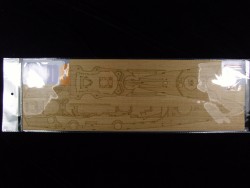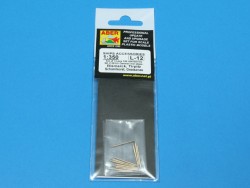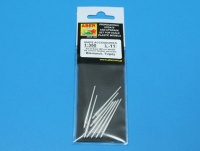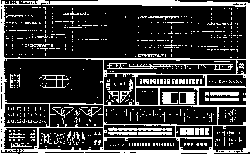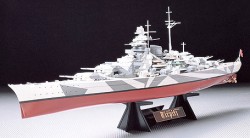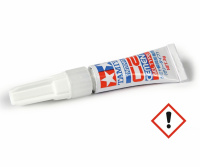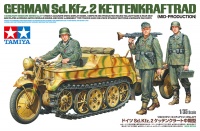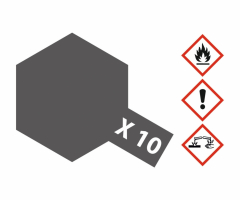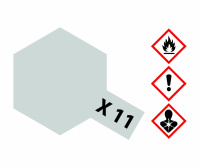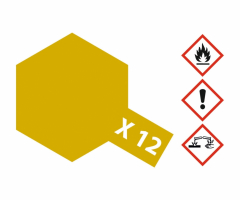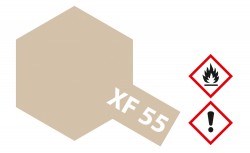Bismarck - German Battleship
1/350 scale plastic model kit of the german Battleship Bismarck.
About the Model:
- 1/350 scale plastic model assembly kit
- Detailed model
- Length: 717mm
- Total parts: ca. 360
- One part hull
Historical background:
At 06.00 hours on Saturday 24th May 1941, at position 63º 20' N, 31º 50' W, the Royal Navy was dealt one of its most shattering blows. The 42,000 ton battle-cruiser Hood was destroyed after an action lasting barely eight minutes with Bismarch, the largest and most modern battleship in service with the German Navy. Three days later, after the most celebrated sea chase of the Second World War, which involved no fewer than three British battleships, two battlecruisers, two aircraft carriers and nine cruisers, plus numerous destroyers, Bismarck was brought to bay, reduced to a blazing hulk, and finally sunk. The career of the most feared German warship was terminated a mere nine months after she was commissioned.
By the Treaty of Versailles of 1919, Germany was forbidden to build warships displacing more than 10,000 tons or carrying armament of a calibre greater than 290mm. Three so-called "pocket battleships" were built more or less within these restrictions between 1929 and 1935, but capital ships capable of rivaling the heaviest units of the major naval powers were not laid down until 1936. These ships, Bismarck and her sister Tirpitz, did not have the benefit of continuous development and improvement as did those of foreign navies, and were fundamentally adaptations of the designs for the Baden class battle-ships built during the First World War. Despite this handicap, Battleships 'F' (Bismarck) and 'G' (Tirpitz) proved to be formidable warships, and although very much lacking in the protection afforded to their internal communications systems, a defect which was to prove particularly disastrous for Bismarck, their vertical armour, machinery and armament were excellent.
The Anglo-German Naval Agreement of 1935 suplanted the conditions imposed by the Treaty of Versailles and recognized the right of the German Navy to possess capital ships of a size comparable to those of other navies, which were themselves limited by the 1930 London Naval Treaty to 35,000 tons. In fact, studies for ships of this nature had already been drawn up, and the design of a 380mm turret was well in hand, by the time the Agreement was signed. Accordingly, on 2st July 1936, the keel of Battle-ship 'F' was laid at the Blohm und Voss shipyard in Hamburg, and despite a number of technical problems the ship was launched on 145h February 1939. Bismarck was commissioned on 24th August 1940, and after a period of trials, crew training and general working-up in the Baltic, was joined in April 1941 by the heavy cruiser Prinz Eugen. The two ships trained together for several weeks and in the middle of May moved north to the Norwegian fjords. On 22nd May, Bismarck and Prinz Eugen, under the command of Admiral Gunther Lutjens, left friendly waters and steered north-west on Operation Rheinubung, a break out, via the Denmark Strait, into the Atlantic Ocean with the intention of attacking the vital British convoys. The British, realizing the immense threat posed by the two raiders, made strenuous efforts to locate the German vessels, and by the evening of 23rd May the cruisers Suffolk and Norfolk had sighted them and proceeded to track their movements by radar, eventually delivering them to the guns of Hood and the brand new battleship Prince of Wales.
Although Hood was destroyed, Bismarck had received three hits from Prince of Wales, on of which had penetrated a fuel tank, causing a leak which left a slick in the vessel's wake and contaminating much of the oil that remained. In view of the seriousness of the damage, Admiral Lutjens decided to cancel Operation Rheinubung and, after detaching Prinz Eugen, made for the Terman-held French coast. The journey was never completed. The pursuit, interception and final annihilation of Bismarck was fraught with incident. First, Swordfish torpedo bombers from the carrier Victorious launched three attacks, but without significant success. Then the British lost contact. It was regained through Bismarck's transmission of a radio message, but the signals were misinterpreted and the German battleship was not positively located again until early on 26th May, when she was spotted by an RAF Catalina flying boat. Strikes by Swordfish aircraft, this time from Ark Royal, were delivered, first in error against the British cruiser Sheffield, then against Bismarck, and one torpedo struck the stern of the battleship, jamming her steering gear and sealing her fate. On the morning of 27th May, the British battleships King George V and Rodney appeared on the horizon and, closing the range, proceeded to pound Bismarck to a wreck. An hour and three quarters later, the cruiser Dorsetshire put three torpedoes into her, and at 10.40 hours she capsized and sank, taking with her some 1,800 sailors.
1/350 scale plastic model kit of the german Battleship Bismarck.
About the Model:
- 1/350 scale plastic model assembly kit
- Detailed model
- Length: 717mm
- Total parts: ca. 360
- One part hull
Historical background:
At 06.00 hours on Saturday 24th May 1941, at position 63º 20' N, 31º 50' W, the Royal Navy was dealt one of its most shattering blows. The 42,000 ton battle-cruiser Hood was destroyed after an action lasting barely eight minutes with Bismarch, the largest and most modern battleship in service with the German Navy. Three days later, after the most celebrated sea chase of the Second World War, which involved no fewer than three British battleships, two battlecruisers, two aircraft carriers and nine cruisers, plus numerous destroyers, Bismarck was brought to bay, reduced to a blazing hulk, and finally sunk. The career of the most feared German warship was terminated a mere nine months after she was commissioned.
By the Treaty of Versailles of 1919, Germany was forbidden to build warships displacing more than 10,000 tons or carrying armament of a calibre greater than 290mm. Three so-called "pocket battleships" were built more or less within these restrictions between 1929 and 1935, but capital ships capable of rivaling the heaviest units of the major naval powers were not laid down until 1936. These ships, Bismarck and her sister Tirpitz, did not have the benefit of continuous development and improvement as did those of foreign navies, and were fundamentally adaptations of the designs for the Baden class battle-ships built during the First World War. Despite this handicap, Battleships 'F' (Bismarck) and 'G' (Tirpitz) proved to be formidable warships, and although very much lacking in the protection afforded to their internal communications systems, a defect which was to prove particularly disastrous for Bismarck, their vertical armour, machinery and armament were excellent.
The Anglo-German Naval Agreement of 1935 suplanted the conditions imposed by the Treaty of Versailles and recognized the right of the German Navy to possess capital ships of a size comparable to those of other navies, which were themselves limited by the 1930 London Naval Treaty to 35,000 tons. In fact, studies for ships of this nature had already been drawn up, and the design of a 380mm turret was well in hand, by the time the Agreement was signed. Accordingly, on 2st July 1936, the keel of Battle-ship 'F' was laid at the Blohm und Voss shipyard in Hamburg, and despite a number of technical problems the ship was launched on 145h February 1939. Bismarck was commissioned on 24th August 1940, and after a period of trials, crew training and general working-up in the Baltic, was joined in April 1941 by the heavy cruiser Prinz Eugen. The two ships trained together for several weeks and in the middle of May moved north to the Norwegian fjords. On 22nd May, Bismarck and Prinz Eugen, under the command of Admiral Gunther Lutjens, left friendly waters and steered north-west on Operation Rheinubung, a break out, via the Denmark Strait, into the Atlantic Ocean with the intention of attacking the vital British convoys. The British, realizing the immense threat posed by the two raiders, made strenuous efforts to locate the German vessels, and by the evening of 23rd May the cruisers Suffolk and Norfolk had sighted them and proceeded to track their movements by radar, eventually delivering them to the guns of Hood and the brand new battleship Prince of Wales.
Although Hood was destroyed, Bismarck had received three hits from Prince of Wales, on of which had penetrated a fuel tank, causing a leak which left a slick in the vessel's wake and contaminating much of the oil that remained. In view of the seriousness of the damage, Admiral Lutjens decided to cancel Operation Rheinubung and, after detaching Prinz Eugen, made for the Terman-held French coast. The journey was never completed. The pursuit, interception and final annihilation of Bismarck was fraught with incident. First, Swordfish torpedo bombers from the carrier Victorious launched three attacks, but without significant success. Then the British lost contact. It was regained through Bismarck's transmission of a radio message, but the signals were misinterpreted and the German battleship was not positively located again until early on 26th May, when she was spotted by an RAF Catalina flying boat. Strikes by Swordfish aircraft, this time from Ark Royal, were delivered, first in error against the British cruiser Sheffield, then against Bismarck, and one torpedo struck the stern of the battleship, jamming her steering gear and sealing her fate. On the morning of 27th May, the British battleships King George V and Rodney appeared on the horizon and, closing the range, proceeded to pound Bismarck to a wreck. An hour and three quarters later, the cruiser Dorsetshire put three torpedoes into her, and at 10.40 hours she capsized and sank, taking with her some 1,800 sailors.
Recommended products:
Wooden Deck for 1/350 DKM Bismarck - Tamiya 78013 - 1/350
Artwox AW1005638cm Barrels for German Battleships Bismarck Class 8pcs - 1/350
ABER ABRE-350L11Photo-Etched Parts for 1/350 DKM Bismarck Tamiya 78013 - 1/350
Eduard EDU53002Customers who bought this product also bought the following products:
Tirpitz - German Battleship - 1/350
Manufacturer: Tamiya Item No.: 78015In stock
Our previous price 67,95 EUR 53,95 EUR you save 21 % /14,00 EUR
VAT incl. excl. Shipping costs
Tamiya CA Cement - Gel Type - 3g
Manufacturer: Tamiya Item No.: 87091In stock
German Sd.Kfz.2 Kettenkraftrad - Mid-Production - 1/35
Manufacturer: Tamiya Item No.: 35377In stock
Photo-Etched Parts for 1/350 DKM Bismarck Tamiya 78013 - 1/350
Manufacturer: Eduard Item No.: EDU53002Available
Tamiya X10 - Gun Metal - Gloss - 23ml
Manufacturer: Tamiya Item No.: 81010In stock
Tamiya X11 - Chrome Silver - Gloss - 23ml
Manufacturer: Tamiya Item No.: 81011Currently not available
Tamiya X12 - Gold Leaf - Gloss - 23ml
Manufacturer: Tamiya Item No.: 81012In stock
Tamiya XF55 - Deck Tan - Flat - 23ml
Manufacturer: Tamiya Item No.: 81355In stock
GPSR Information
Manufacturer:Tamiya, Inc.
3-7 Ondawara, Suruga-Ku
422-8610 Shizuoka
Japan
Internet: www.tamiya.com
Responsible person (EU):
TAMIYA-CARSON Modellbau GmbH & Co. KG
Werkstraße 1
90765 Fürth
Deutschland
Email: info@tamiya.de
Internet: www.tamiya.de


